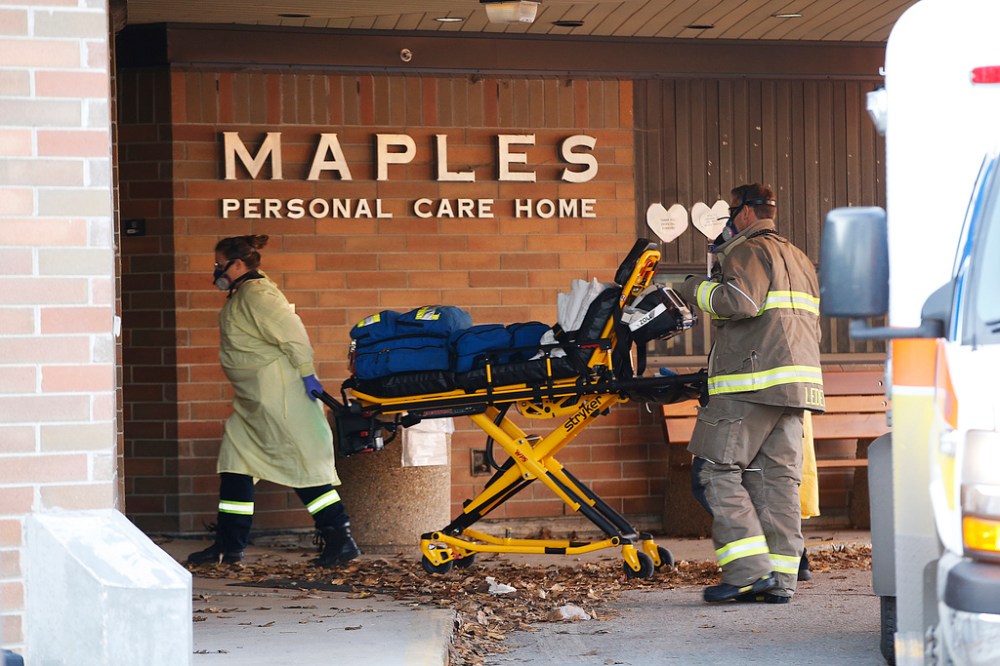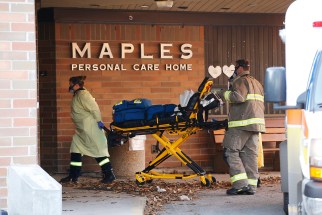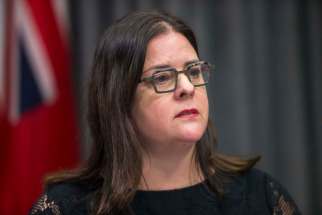Province’s poor pandemic planning failed care homes
Read this article for free:
or
Already have an account? Log in here »
To continue reading, please subscribe:
Monthly Digital Subscription
$0 for the first 4 weeks*
- Enjoy unlimited reading on winnipegfreepress.com
- Read the E-Edition, our digital replica newspaper
- Access News Break, our award-winning app
- Play interactive puzzles
*No charge for 4 weeks then price increases to the regular rate of $19.00 plus GST every four weeks. Offer available to new and qualified returning subscribers only. Cancel any time.
Monthly Digital Subscription
$4.75/week*
- Enjoy unlimited reading on winnipegfreepress.com
- Read the E-Edition, our digital replica newspaper
- Access News Break, our award-winning app
- Play interactive puzzles
*Billed as $19 plus GST every four weeks. Cancel any time.
To continue reading, please subscribe:
Add Free Press access to your Brandon Sun subscription for only an additional
$1 for the first 4 weeks*
*Your next subscription payment will increase by $1.00 and you will be charged $16.99 plus GST for four weeks. After four weeks, your payment will increase to $23.99 plus GST every four weeks.
Read unlimited articles for free today:
or
Already have an account? Log in here »
Hey there, time traveller!
This article was published 05/02/2021 (1767 days ago), so information in it may no longer be current.
One of the key takeaways from an external review into Maples Long Term Care Home is how dysfunctional the province’s pandemic planning process was in the months leading up to Manitoba’s most deadly nursing home outbreak.
In her report released Thursday, Lynn Stevenson, a former associate deputy minister of health in the B.C. Ministry of Health, described a health-care system mired in a state of confusion, where care home operators were given mixed messages on how to respond to COVID-19 outbreaks.
Stevenson said care homes were presented with multiple versions of “confusing” and “unwieldy” pandemic planning documents from separate provincial agencies. Plans overlapped and were often not co-ordinated. In some cases, it was difficult to discern between draft copies and updated final versions, Stevenson found.

“It was unclear how information was meant to flow up, down, and across, who was responsible for decision-making and which guidelines were required to be followed,” Stevenson wrote. “It was unclear to the reviewer which document Maples staff would primarily refer to in the overall management of an outbreak.”
These are not signs of a well planned, centrally co-ordinated effort to combat a public health emergency like a pandemic. This is evidence of a fractured system that lacked effective planning and a clear chain of command.
It’s little wonder the system failed as spectacularly as it did.
As early as Oct. 15, five days before an outbreak was declared at Maples, emails showed the care home requested staffing support from the WRHA, and later from the provincial recruitment and redeployment team. Those requests intensified as a growing number of staff tested positive for COVID-19 and was forced to self-isolate. The higher the absenteeism, the more chaotic the workplace became, the report found.
However, no staffing support was given. Maples was forced to hire untrained agency staff, including general labourers, many of whom had no clear responsibilities.
There were reports of crowding in hallways and breaches of personal protective equipment protocols, which further exacerbated efforts to contain the virus.
“Once the staffing numbers decreased it was virtually impossible to maintain appropriate PPE practices,” Stevenson wrote.
By Oct. 31, 113 residents and 20 staff were infected; and still no help from the province.
“(Personal care homes) were given assistance in relation to how they might obtain additional human resources rather than concrete direct support from the region or province,” Stevenson wrote.
Even after an unannounced visit to Maples Nov. 2 by multiple provincial agencies (the Winnipeg Regional Health Authority, Workplace Safety and Health, a public health inspector, and licensing and compliance staff), there was still no staffing support provided, nor any immediate action taken.
Provincial officials found a number of problems at the care home during the inspection, including significant concerns with staffing and improper adherence to physical distancing requirements in screening entrance areas and staff rooms.
Four days later, paramedics were called to treat and transport multiple residents, eight of whom died over a 48-hour period.
A report by Canada’s chief science officer written in April 2020 during the first wave of the pandemic identified a number of immediate steps governments should take to protect nursing homes. They included ensuring care homes had an adequate supply of trained staff and infection prevention training and control to properly manage outbreaks.
“If one accepts these options as articulated in April 2020, then system-wide planning and followup for (care homes) in Winnipeg should have been more robust,” wrote Stevenson. “There were many staffing strategy documents, but in many cases these had not been completed, nor had action been taken.”
Stevenson’s report makes a mockery of claims by senior government officials who said, following the Maples outbreak, that they did everything they could to protect residents in care homes from the pandemic’s second wave.
What the report shows is the system set nursing homes up for failure.
tom.brodbeck@freepress.mb.ca

Tom has been covering Manitoba politics since the early 1990s and joined the Winnipeg Free Press news team in 2019.
Our newsroom depends on a growing audience of readers to power our journalism. If you are not a paid reader, please consider becoming a subscriber.
Our newsroom depends on its audience of readers to power our journalism. Thank you for your support.










